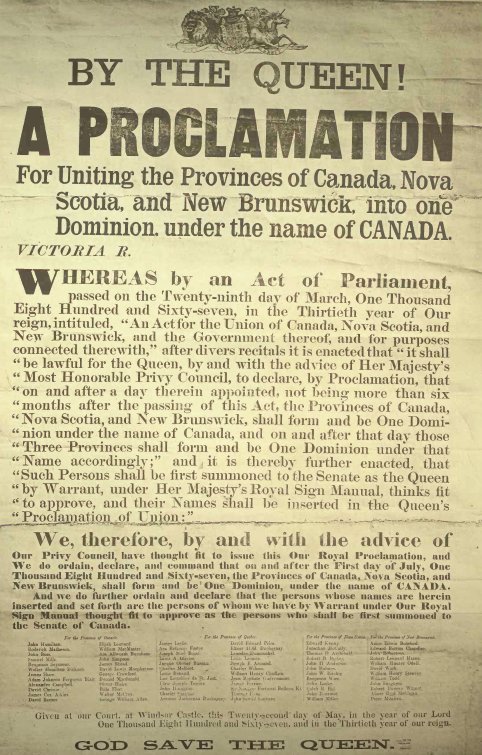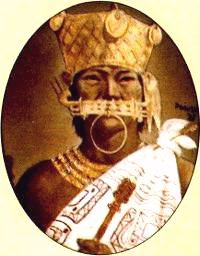|
Muisca Confederation
The Muisca Confederation was a loose confederation of different Muisca rulers (''zaques'', ''zipas'', ''iraca'', and ''tundama'') in the central Andes, Andean highlands of what is today Colombia before the Spanish conquest of the Americas, Spanish conquest of northern South America. The area, presently called Altiplano Cundiboyacense, comprised the current departments of Colombia, departments of Boyacá Department, Boyacá, Cundinamarca Department, Cundinamarca and minor parts of Santander Department, Santander. According to some List of Muisca scholars, Muisca scholars the Muisca Confederation was one of the best-organized confederations of tribes on the South American continent. Other Historian, historians and anthropologists, however, such as Jorge Gamboa Mendoza, attribute the present-day knowledge about the confederation and its organization more to a reflection by Spanish chroniclers who predominantly wrote about it a century or more after the Muisca were conquered and propo ... [...More Info...] [...Related Items...] OR: [Wikipedia] [Google] [Baidu] |
Pre-Columbian
In the history of the Americas, the pre-Columbian era, also known as the pre-contact era, or as the pre-Cabraline era specifically in Brazil, spans from the initial peopling of the Americas in the Upper Paleolithic to the onset of European colonization of the Americas, European colonization, which began with Christopher Columbus's voyage in 1492. This era encompasses the history of Indigenous peoples of the Americas, Indigenous cultures prior to significant European influence, which in some cases did not occur until decades or even centuries after Columbus's arrival. During the pre-Columbian era, many civilizations developed permanent settlements, cities, agricultural practices, civic and monumental architecture, major Earthworks (archaeology), earthworks, and Complex society, complex societal hierarchies. Some of these civilizations had declined by the time of the establishment of the first permanent European colonies, around the late 16th to early 17th centuries, and are know ... [...More Info...] [...Related Items...] OR: [Wikipedia] [Google] [Baidu] |
Zipa
When the Spain, Spanish arrived in the central Colombian highlands, the region was organized into the Muisca Confederation, which had two rulers; the ''Zipa'' was the ruler of the southern part and based in Funza, Muyquytá. The ''Zaque'' was the ruler of the northern area and based in Tunja, Hunza, known today as Tunja. Organization ''Zipa (Psihipqua)'' and ''Zaque (Hoa)'' were the titles given to these rulers of the ancient confederation. Neither exercised absolute power, not rigid or strict control over those to whom they owed their power, so that they can be considered kings. However, these positions of power were of great honor and were surrounded by a rather elaborate ceremony. The position of the ''Zipa'' was such that not even the members of the nobility dared to look him in the face, and it is said if the ''Zipa'' needed to spit, someone would hold out a piece of rich cloth for him to spit on, because it would be sacrilegious for anything so precious as his saliva to to ... [...More Info...] [...Related Items...] OR: [Wikipedia] [Google] [Baidu] |
Confederation
A confederation (also known as a confederacy or league) is a political union of sovereign states united for purposes of common action. Usually created by a treaty, confederations of states tend to be established for dealing with critical issues, such as defence, foreign relations, internal trade or currency, with the central government being required to provide support for all its members. Confederalism represents a main form of intergovernmentalism, defined as any form of interaction around states that takes place on the basis of sovereign independence or government. The nature of the relationship among the member states constituting a confederation varies considerably. Likewise, the relationship between the member states and the general government and their distribution of powers varies. Some looser confederations are similar to intergovernmental organization, international organisations. Other confederations with stricter rules may resemble federal systems. These elements o ... [...More Info...] [...Related Items...] OR: [Wikipedia] [Google] [Baidu] |
Santander Department
Santander () is a department of Colombia. Santander inherited the name of one of the nine original states of the United States of Colombia. It is located in the central northern part of the country, borders the Magdalena River to the east, Boyacá to the south and southeast, the Norte de Santander Department to the northeast, the Cesar Department to the north, the Bolivar and Antioquia Departments to the west. Its capital is the city of Bucaramanga. History Pre-Columbian era Prior to the arrival of the Spaniards, the territory now known as Santander was inhabited by Amerindian ethnic groups: Muisca, Chitareros, Laches, Yariguí, Opón, Carare and Guanes. Their political and social structure was based on ''cacicazgos'', a federation of tribes led by a ''cacique'', with different social classes. Their main activity was planting maize, beans, yuca, arracacha, cotton, agave, tobacco, tomato, pineapple and guava, among others. Their agricultural skills were suffi ... [...More Info...] [...Related Items...] OR: [Wikipedia] [Google] [Baidu] |
Boyacá Department
Boyacá () is one of the thirty-two departments of Colombia, and the remnant of Boyacá State, one of the original nine states of the "United States of Colombia". Boyacá is centrally located within Colombia, almost entirely within the mountains of the Cordillera Oriental, Colombia, Eastern Cordillera to the border with Venezuela, although the western end of the department extends to the Magdalena River at the town of Puerto Boyacá, Boyacá, Puerto Boyacá. Boyacá borders to the north with the Department of Santander Department, Santander, to the northeast with the Bolivarian Republic of Venezuela and Norte de Santander, to the east with the departments of Arauca Department, Arauca and Casanare Department, Casanare. To the south, Boyacá borders the department of Cundinamarca Department, Cundinamarca and to the west with the Department of Antioquia Department, Antioquia covering a total area of . The capital of Boyacá is the city of Tunja. Boyacá is known as "The Land of ... [...More Info...] [...Related Items...] OR: [Wikipedia] [Google] [Baidu] |
Cundinamarca Department
Department of Cundinamarca (, ) is one of the departments of Colombia. Its area covers (not including the Capital District) and it has a population of 2,919,060 as of 2018. It was created on August 5, 1886, under the constitutional terms presented on the same year. Cundinamarca is located in the center of Colombia. Cundinamarca's capital city is Bogotá, the capital of Colombia. This is a special case among Colombian departments, since List of capitals outside the territories they serve, Bogotá is not legally a part of Cundinamarca, yet it is the only department that has its capital designated by the Colombian Constitution of 1991, Constitution (if the capital were to be ever moved, it would take a constitutional reform to do so, instead of a simple ordinance passed by the Cundinamarca Assembly). In censuses, the populations for Bogotá and Cundinamarca are tabulated separately; otherwise, Cundinamarca's population would total over 11 million. Etymology The name of Cundin ... [...More Info...] [...Related Items...] OR: [Wikipedia] [Google] [Baidu] |
Colombia
Colombia, officially the Republic of Colombia, is a country primarily located in South America with Insular region of Colombia, insular regions in North America. The Colombian mainland is bordered by the Caribbean Sea to the north, Venezuela to the east and northeast, Brazil to the southeast, Peru and Ecuador to the south and southwest, the Pacific Ocean to the west, and Panama to the northwest. Colombia is divided into 32 Departments of Colombia, departments. The Capital District of Bogotá is also the List of cities in Colombia by population, country's largest city hosting the main financial and cultural hub. Other major urban areas include Medellín, Cali, Barranquilla, Cartagena, Colombia, Cartagena, Santa Marta, Cúcuta, Ibagué, Villavicencio and Bucaramanga. It covers an area of 1,141,748 square kilometers (440,831 sq mi) and has a population of around 52 million. Its rich cultural heritage—including language, religion, cuisine, and art—reflects its history as a co ... [...More Info...] [...Related Items...] OR: [Wikipedia] [Google] [Baidu] |
Sagipa
Sagipa or Zaquesazipa (died 1539, Bosa, New Kingdom of Granada) was the fifth and last ruler (''psihipqua'') of Muyquytá, currently known as Bogota, as of 1537. He was the brother of his predecessor Bogotá but the traditional faction of the Muisca considered him an usurper as his nephew Chiayzaque, the ''cacique'' of Chía, was the legitimate successor of Tisquesusa. His ''hoa'' counterpart in the northern part of the Muisca territory was Quiminza, the last surviving ruler of the Muisca. The daughter of Sagipa, named as Magdalena de Guatavita, married conquistador Hernán Venegas Carrillo, one of the first mestizo marriages in the New Kingdom of Granada.Zaquezazipa - Geni Sagipa appears with alternative names in the Spanish chronicles; Saquesazippa, Saquezazippa, Sacresasigua, Saxagipa, Sajipa and Zaquezazigua. [...More Info...] [...Related Items...] OR: [Wikipedia] [Google] [Baidu] |
Tisquesusa
Tisquesusa, also spelled Thisquesuza, Thysquesuca or Thisquesusha (referred to in the earliest sources as Bogotá, the Elder) (died Facatativá, 1537) was the fourth and last independent ruler ('' psihipqua'') of Muyquytá, main settlement of the southern Muisca between 1514 and his death in 1537. The Spanish pronunciation of his name brought about the Colombian capital Bogotá. Tisquesusa was the ruler of the southern Muisca Confederation at the time of the Spanish conquest of the Muisca, when the troops led by Gonzalo Jiménez de Quesada and his brother entered the central Andean highlands. Biography Tisquesusa was ''cacique'' of Chía and following the Muisca heritage rules, he, as nephew of the previous ruler Nemequene, succeeded his uncle in 1514. At the start of his reign, Tisquesusa fought against the Panche in the west of the Muisca Confederation. The brother of Tisquesusa and later -according to Muisca heritage rule illegal- successor Sagipa was the general in ... [...More Info...] [...Related Items...] OR: [Wikipedia] [Google] [Baidu] |
Nemequene
Nemequene or Nemeguene (died 1514) was the third ruler (''zipa'') of Bacatá as of 1490. His '' zaque'' counterpart ruling over the northern area of the Muisca territory was Quemuenchatocha. Etymology Nemequene in the Chibcha language of the Muisca has two possible meanings, derived from the words ''nymy'', " jaguar" and ''quyne'', meaning either "bone" or "force". Biography Nemequene succeeded to the throne of the southern Muisca in 1490 after the death of his predecessor Saguamanchica in the Battle of Chocontá where the ''zaque'' of the northern Muisca Michuá had also died. While Nemequene wanted to continue the attacks against the northern Muisca, he had to face the dangers of the Panche to the west of his territory. Nemequene installed his nephew and legal successor Tisquesusa as army general to fight off the Panche with success. Looking to expand the territory of the southern Muisca, Nemequene succeeded in the conquest of other areas in the central highlands o ... [...More Info...] [...Related Items...] OR: [Wikipedia] [Google] [Baidu] |
Michuá
Michuá or Michica (died Chocontá, 1490) was the second ''zaque'' of Hunza, currently known as Tunja, as of 1470. His contemporary enemy ''zipa'' of the southern Muisca was Saguamanchica. Biography Little is known about the history of Michuá, who accessed the throne of the northern Muisca in 1470. He broke the political peace established under his predecessor Hunzahúa and fought a 16-year war with the southern enemies led by Saguamanchica. The latter, supported by his vassal Pasca conquered Fusagasugá and Tibacuy. Saguamanchica attempted to submit the ''cacique'' of Guatavita who asked Michúa for assistance. Michuá sent a messenger to Bacatá to negotiate the ''zipa'' would listen to the complaints of the ''cacique''. Saguamanchica was not amused by undermining his authority and abused the messenger. When Michuá found out about the mistreatment of his messenger he sent an army of forty thousand guecha warriors to the ''zipa''. Realising the strength of the army Saguam ... [...More Info...] [...Related Items...] OR: [Wikipedia] [Google] [Baidu] |









